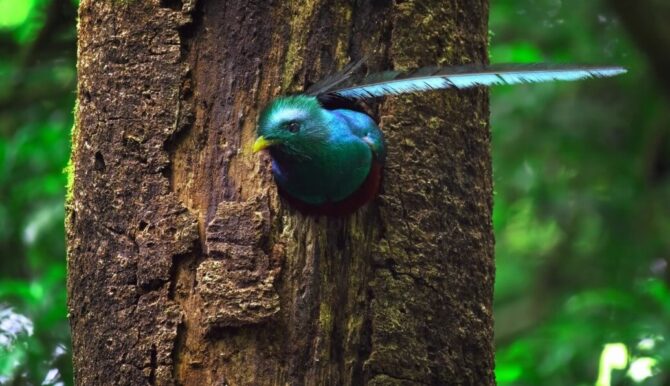Guatemala is a country with a rich biodiversity, thanks to different ecosystems that range from rainforests to mountains. This habitat diversity makes it home to a wide variety of fascinating animals, and some of them are unique to the region. In this article, I’ll introduce you to 11 amazing animals that live here, but also the endangered ones, which will show you how diverse and beautiful this country is.
Key Takeaway
- Guatemala’s diverse wildlife includes the resplendent quetzal, jaguar, scarlet macaw, ocelot, Baird’s tapir, Guatemalan Black Howler Monkey, Morelet’s crocodile, white-nosed coati, keel-billed toucan, Central American agouti, and puma.
- Guatemala’s wildlife is unique due to its diverse ecosystems, ranging from rainforests to mountain ranges, which support a wide variety of species, many of which are endemic or rare.
Guatemalas Fascinating Ecosystems
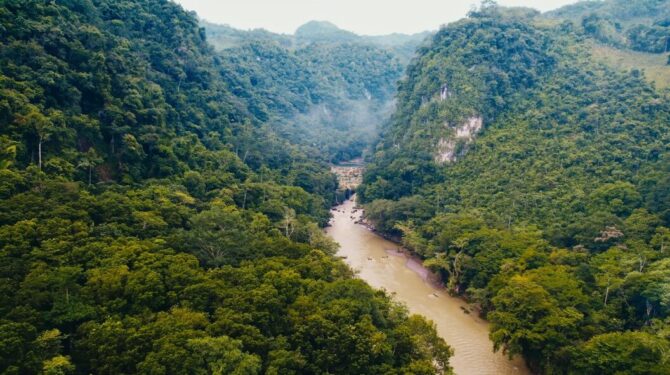
With its location in the heart of Central America, Guatemala is a treasure of natural diversity, fulfilled by many ecosystems that range from lush, dense rainforests in the Petén region to the misty, mountain forests of the Sierra de los Cuchumatanes. This climatic variety creates many different habitats, each having a unique set of wildlife adapted to its specific environment.
The lowland rainforests are bursting with wildlife, where jaguars sneak around in the dark, and bright red scarlet macaws add colors to the sky. These forests are full of different kinds of animals and plants, making them important homes for all sorts of creatures, like rare monkeys and different types of insects and birds that altogether keep the forests lively.
If you go higher in the mountains, you will encounter forests that have cool and dark conditions. These forests hold perpetual mist, providing homes for mosses, ferns, and epiphytes that cling to every available surface. These forests are crucial water sources, feeding rivers and streams that support both wildlife and human populations below.
These Are The 11 Animals You Can Spot in Guatemala
As I already mentioned, this beautiful country is home to many species, some of which are endemic or very rare. I am taking you on a Safari ride, where we will explore them together:
1. Resplendent Quetzal
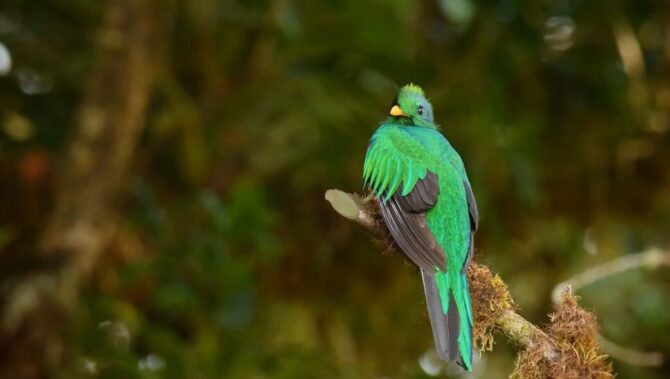
Known for its vibrant colors and long tail feathers, the Resplendent Quetzal is a symbol of freedom in Guatemala and it appears on the country’s flag and currency. It is mostly found in cloud forests at high altitudes.
Resplendent Quetzal is very recognizable with its green body, red breasts, and a unique crest on its head. You can spot a male bird by its very long tail that can be up to three feet long. These feathers are especially visible during the breeding season.
2. Jaguar
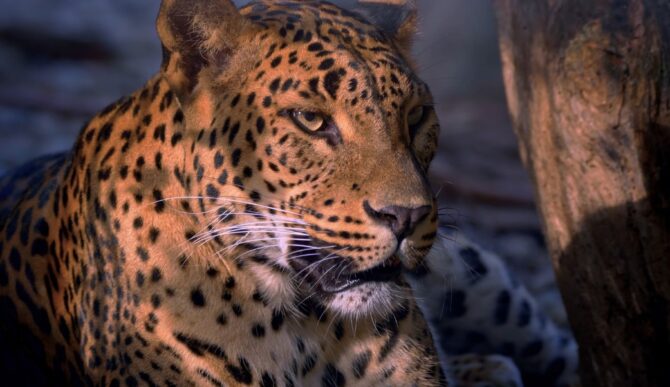
Jaguars are found in the dense jungles of the Petén region. They are apex predators, playing a critical role in holding the balance of their ecosystem.
Their coats provide excellent camouflage between the dense vegetation, keeping them undercovered while they stalk their prey. Jaguars are solitary animals, that come together only for mating, and their territories can span vast areas, including rivers and forests that provide endless food sources such as deer, tapirs, and smaller mammals.
In the Mayan culture that heavily influenced Guatemala, jaguars were considered gods of the underworld, symbols of night and darkness, and it was believed that they could enable communication between the living and the dead. Today, jaguars are facing threats from habitat destruction due to deforestation and agriculture, as well as from poaching. There are many conservation efforts by the locals to protect these magnificent animals and provide them safe corridors, where they can walk freely, hunt, and reproduce.
3. Scarlet Macaw
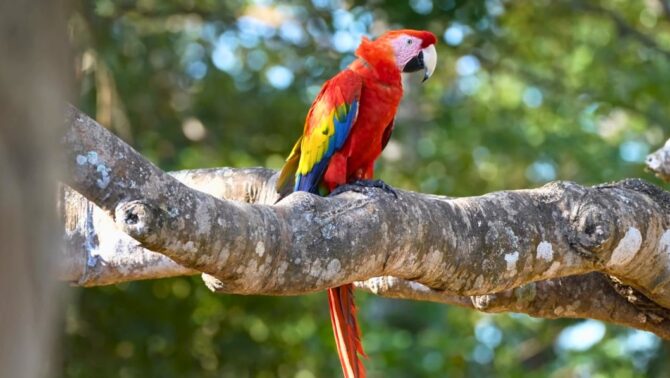
This brightly colored parrot is known for its red, yellow, and blue feathers. Scarlet Macaws are social birds, and they are often found in pairs or family groups in the rainforests.
This large parro plays a significant role in the ecosystem and cultural heritage of Guatemala. You can find them in rainforests in the Petén region because they like places with a lot of fruit trees. Their diet is important because it contributes to the regeneration of the rainforest.
You can see them often flying in pairs or with their offspring, and they are very loud, so you can hear them through the whole forest even when you can’t see them. Scarlet macaws are very social and intelligent and they have many interactions within their group, such as mutual grooming and vocal communication.
The Mayans were incorporating these birds into their art and mythology. Macaws were symbols of fire and the sun, and their feathers were precious and often used in ceremonies and as decoration.
4. Ocelot

It is a wild cat with a unique spotted coat, that roam the forests at night in search of prey. They are solitary animals, making them hard to spot in the wild, making them a silent predator.
This medium-sized wild cat has a diverse diet, eating small mammals, birds, and reptiles, showing their adaptability and role as an important predator for ecological balance. Despite their small size compared to other big cats, ocelots possess outstanding strength and agility, which they use to climb trees and swim.
Like jaguars, their survival is challenged by habitat destruction due to deforestation, agricultural expansion, and urban development, because it reduces their territories for prey hunting. Another threat to ocelots is poaching because their unique fur is expensive on the market.
There are many conservation efforts to provide a safe future for ocelots, such as habitat preservation, trade regulations, and environmental education.
5. Baird’s Tapir
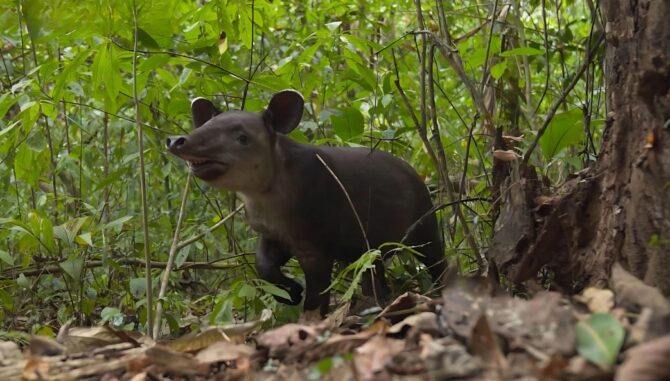
Baird’s Tapir is my favorite animal in Guatemala because it is unique, and have seen it here for the first time. It is also known as the “mountain cow“, and is a symbol of the wild and untouched nature of Guatemala’s diverse ecosystems. It has a distinctive snout, which serves as a trunk for foraging, and a body covered in dark hair.
Baird’s Tapir is an essential part of the ecosystem because it contributes to forest regeneration through its diet. It eats leaves, twigs, and fruits. These animals move mostly at night, so it is very rare to see them while exploring the wild.
It also faces significant threats from habitat loss, such as expanding agricultural activities and logging in their natural environments. Poaching poses another threat because there is a high demand for their meat. Because of that, there are many initiatives supported by local and international organizations dedicated to wildlife conservation.
6. Guatemalan Black Howler Monkey
This type of monkey is well known for loud howls that can be heard for miles through dense forests. Like other animals that I mentioned, these monkeys are an important part of the rainforest ecosystem, because they spread seeds through their diet.
These large primates have black coats, while males are notably larger than females. You can see them in family groups walking around, but their favorite places for hanging out are trees, as they eat mostly leaves, fruits, and flowers.
7. Morelet’s Crocodile
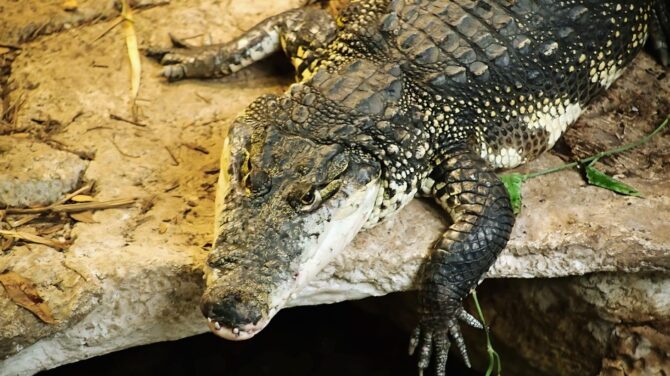
This medium-sized crocodile lives in freshwater habitats, such as lakes, and rivers. They are less aggressive than their larger relatives but still, you should pay attention if you ever encounter them.
Morelet’s Crocodile is a native species to the freshwater habitats of Guatemala, Belize, and Mexico. It has a dark olive-green color and a narrow snout, so it is easy to distinguish it from other crocodiles. It is an apex predator that helps to keep the balance of the underwater ecosystems by controlling populations of fish and other small animals.
Like every other animal, it has a threat from habitat loss, but local conservation efforts succeed in stabilizing their populations. These efforts involved legal protection, habitat protection, and breeding programs resulting in increasing the number of Morelet’s Crocodiles.
8. White-nosed Coati

If you love raccoons, you will love this animal, as it is tightly related to them. They are social animals, often seen in groups, living mostly in the jungles of Guatemala.
The White-nosed Coati, as the name suggests, are recognizable by their flexible snouts, which they use to root out insects and fruits. They are omnivores, and they live in large matriarchal groups known as bands. These bands, which can have dozens of individuals, are primarily female, as males typically live a more solitary life until the breeding season.
If you explore the natural reserves and national parks, you will most likely spot them during the daytime. The White-nosed Coati has some threats regarding habitat conservation, but they are widely spread because they are very adaptable to various environments, and even areas that are populated by humans.
9. Keel-billed Toucan
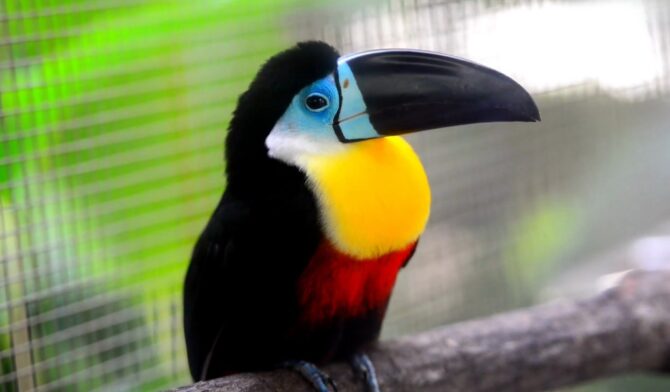
This is a real treat for bird lovers, as it is one of the most iconic exotic birds in the forests of Guatemala.
The Keel-billed Toucan is also known as the “rainbow toucan”, and it is an internationally recognized bird of the tropical forests. Its most visible and unique feature is the large and colorful bill, which has a light and “spongy” structure. This bill is not just visual beauty, but it is also functional and it enables the toucan to reach fruits on tree branches and to peel the fruit, spreading the seeds around their habitat, which contributes to the ecosystem. Besides fruits, this toucan eats insects and even small lizards.
These birds are very social, you can often see them in flocks, where they communicate with a noise similar to frogs, which adds to the rich auditory of the jungle. Despite their fame among the birdwatchers, Keel-billed Toucans face threats from the pet trade.
10. Central American Agouti

A rodent, looking like a large guinea pig, is an important seed spreader in the Guatemalan ecosystem.
They have sleek, brown fur and agile legs, agoutis are about the size of a small dog. Their bodies are adapted to the challenges of forest life, so they have sharp claws for digging and powerful legs for quick runs when encountered with predators.
They have a significant role in the ecosystem, as they are known as “gardeners of the forest” because they bury seeds and nuts, which they may later retrieve or forget, allowing these seeds to grow into new plants. This behavior makes them one of the few animals capable of dispersing the seeds of large fruits, which are too large for other forest dwellers to handle.
Central American Agoutis face threats from habitat loss and hunting, which have led to their disappearance from certain areas where they were common.
11. Puma
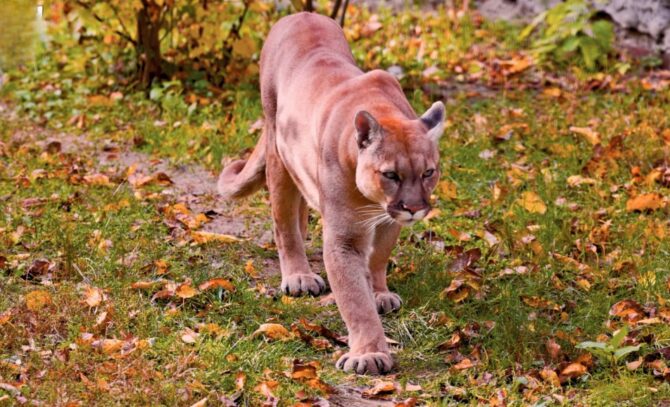
Last but not least. One of my favorite animals that I encountered during a Safari tour is the Puma. Also known as mountain lions or cougars, pumas are flexible predators that can adapt to a wide range of habitats, including the forests and mountains of Guatemala.
This is a solitary predator that you can spot everywhere – from lowland tropical forests to high-altitude cloud forests. Its coat provides camouflage among the forest and rocky terrains. It also plays an important role in its environment as it controls the population of other animals, such as deer and smaller mammals.
Despite their strength and adaptability, pumas in Guatemala face habitat loss due to deforestation agriculture expansion, and hunting pressures.
How To See These Animals During Your Visit? Tips For Ethical Observation
Exploring the wildlife of Guatemala is a truly one-time life experience. However, it must be done ethically and responsibly to make sure there is a minimal impact on the animals, their environment, and their everyday habits. I will provide you with some tips based on my personal experience on how to ethically observe this animal in the wild:
- Choose Responsible Eco-tourism Operators – There are many tour operators and different tours you can find during your visit. Select tours and guides who contribute to ethical wildlife viewing, and contribute to conservation projects. Look for operators committed to sustainable practices, and the well-being of local communities. There are many shady tour operators that you should avoid, so do deep research before your visit, and find a tour and a tour operator that is most suitable for you.
- Visit National Parks and Reserves – Parks like Tikal National Park, Sierra del Lacandón National Park, and Biotopo del Quetzal are well-managed and provide habitats for species like the resplendent quetzal, jaguars, and scarlet macaws. These protected areas often have trained guides who can enhance your experience with their knowledge of the wildlife and ecosystems. Guides help you spot certain animals, as they have experience in knowing animals’ daily movements and patterns through the national park, and are connected with other guides.
- Keep a Respectful Distance – Always maintain a safe and respectful distance from animals. Use binoculars or a zoom lens for a closer look without disturbing them. Remember that approaching too closely can stress animals, which is against policy in most of the national parks.
- Minimize Your Impact – Stick to marked trails and viewing areas to reduce your impact on natural habitats. Don’t leave any waste behind, and reduce your noise levels, as loud sounds can disturb animals.
- Support Conservation Efforts – Many eco-tourism operators directly support conservation efforts through donations or by participating in research and habitat restoration projects. By choosing these operators, your visit can contribute to the ongoing protection of wildlife.
- Travel in Small Groups – Smaller groups have less impact on the environment and wildlife, making it easier to move around the national park.
- Respect Local Guidelines and Regulations – Always follow the rules and guidelines provided by guides, park rangers, and conservation organizations. These regulations are made to protect both wildlife and visitors. If you break any of the rules in some reserves, you can be punished by the rangers guarding the national park. Depending on the problem, you can get a high fine, or even spend a night in jail.
